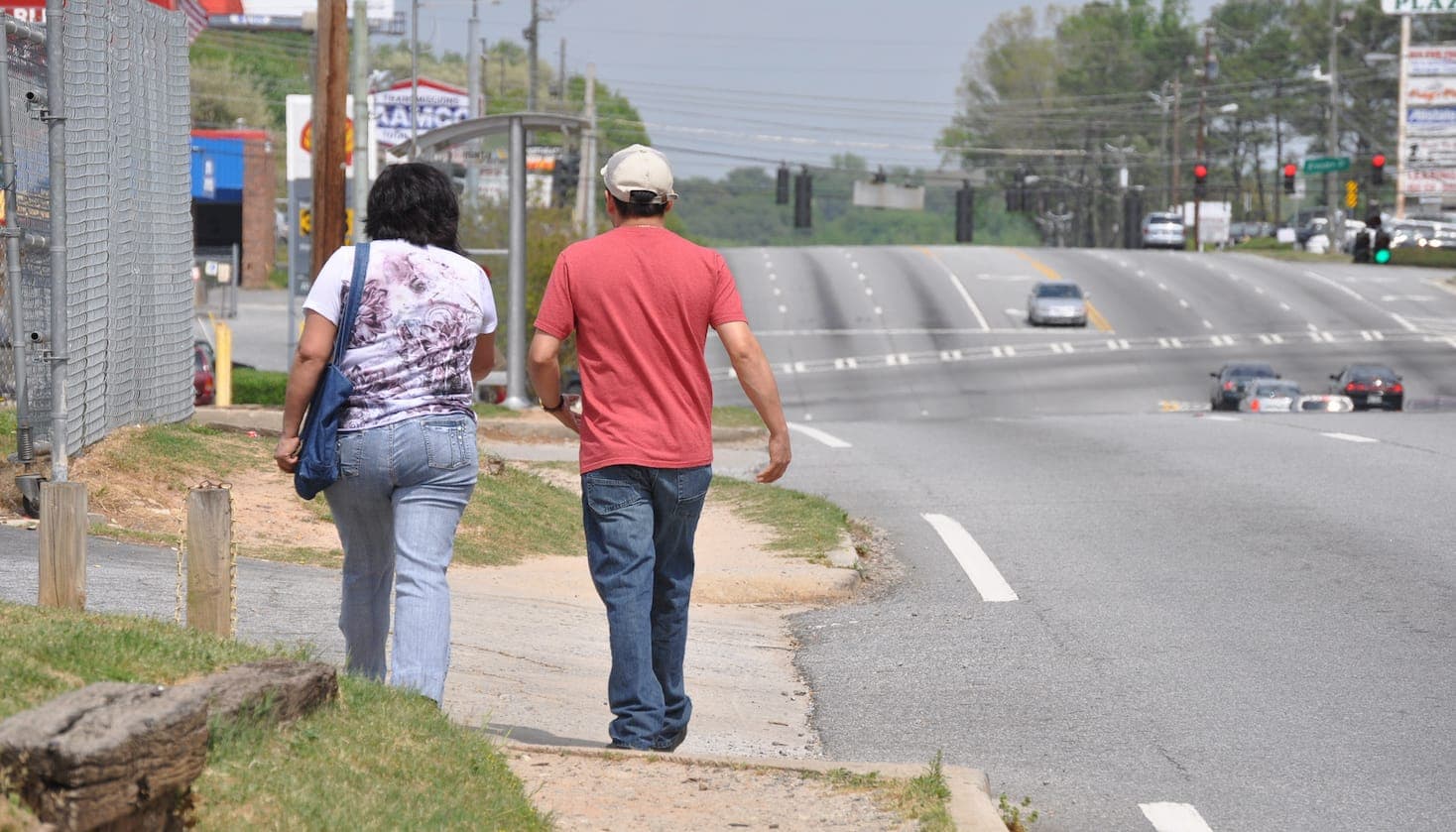
News
By Eric Cova, October 4, 2023
October marks National Pedestrian Safety Month, where the National Highway Traffic Safety Administration (NHTSA), part of the U.S. Department of Transportation, invites stakeholders to help “create a transportation system for all people to easily and safely walk.” But why do we need a whole month on pedestrian safety? It’s because U.S. roads continue to be among the most dangerous roads for people outside of cars in the developed world.
In 2021, more than 7,300 people walking lost their lives to traffic violence. This represents a massive 12.4 percent increase over 2020. And the cause of our dangerous streets is no mystery. The epidemic of pedestrian fatalities continues to grow worse because our nation’s streets are Dangerous by Design, designed primarily to move cars quickly at the expense of keeping everyone safe. People who walk, either by choice or because it is their only available transportation option, are forced to do so in environments that put them at severe risk.
And yet transportation agencies continue to prioritize speed over safety, often in ways that are hard to see. So what does this look like in practice? Watch our video below:
Enough is enough
While it is important to take time to draw attention to the issue of pedestrian safety, we should be careful not to applaud the U.S. Department of Transportation for leading the charge with this month’s observation. It is troubling if the most energy on improving pedestrian safety from NHTSA seems to be coming from its communications office. There are other, more critical, actions that we need leadership on to address our national pedestrian safety crisis.
Pedestrian Safety Month shouldn’t just be about observance, it should be about action. Smart Growth America and the National Complete Streets Coalition have long raised our voices for safer streets, and we have followed that up with action by supporting quick build demonstrations, training local champions, and providing important policy guidance to jurisdictions. But it’s not just us—local and state champions are hungry for long-promised action and research, like stronger updates to the New Car Assessment Program (NCAP), that could change the way they do their work and immediately start saving lives. They are not asking for another post on social media that points to the fact that people are dying.
Now, we need the federal government to meet us on the path to truly make streets safer for pedestrians. A foundational and impactful first step would be a better approach to collecting pedestrian safety data so that planners and advocates can access it more quickly.
Where to Start?
Data
We need better data, faster. It should not take 15 months to get accurate data on pedestrian fatalities, yet we didn’t see the final numbers for 2021 until March of this year. As we said in a previous blog, we can’t say we care about a crisis that we are failing to measure well. Federal agencies should take this to heart as they observe Pedestrian Safety Month.
Why does it take so long? It’s because of a convoluted process for sharing the information. States report traffic fatalities to federal agencies, including the NHTSA, who then organize and clean up the data, which is finally released by USDOT.
Guidance
While other safety-related guidance has been released this year, practitioners and advocates alike are still anxiously awaiting the release of the updated Manual on Uniform Traffic Control Devices (MUTCD) from the Federal Highway Administration (FHWA)—originally scheduled for release on May 15, 2023. A new MUTCD has the potential to change the way communities across the U.S. can leverage the built environment to create safer conditions for people walking. It also has the potential to identify areas where increased advocacy, research, and case studies are necessary to improve the adoption of new best practices.
The MUTCD defines standards for traffic control devices, which include pedestrian crossings and lane markings like green bike lanes and red bus-only lanes. Though the current MUTCD prioritizes vehicle speed over pedestrian safety, the next edition (which we hope will be released this month) has the opportunity to make changes that benefit all road users. Learn more about the MUTCD via our T4America blog post here.
Increased funding
It has been promising to see the movement around new programs like Safe Streets and Roads for All which has the potential to get much-needed funding to communities looking to be intentional and deploy solutions to improve safety for all modes. However, equally important will be communicating the results of the program through case studies and applicable research to capture new best practices that should be deployed nationwide. And wouldn’t it be great if pedestrian safety was a cornerstone of more than just a single program?
Last Words
While we are happy to join the U.S. Department of Transportation this month in acknowledging the need for attention around pedestrian safety, we would be happier to join the department in increased efforts that would actually have a chance at saving the lives of pedestrians.
Keep an eye out for more articles, advocacy, and educational opportunities this month as we continue to call for action to make streets safer for everyone, no matter how they choose to travel.
Related News

© 2025 Smart Growth America. All rights reserved
Site By3Lane Marketing












